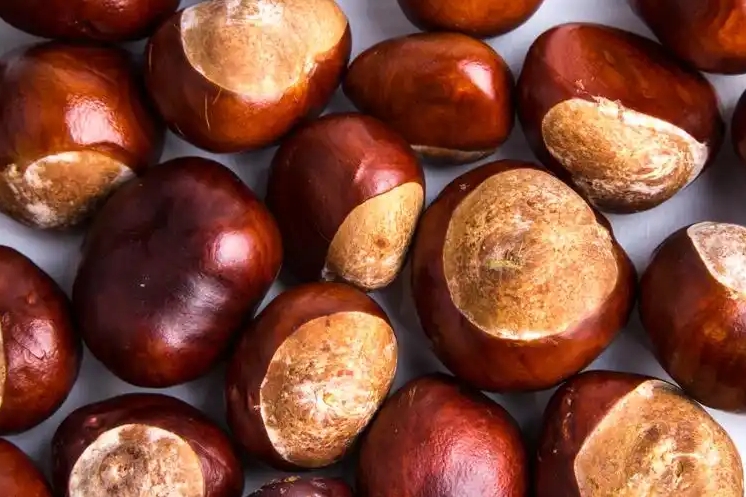
 i_need_contribute
i_need_contribute
Many traditional Chinese foods are especially suited for winter. Some have colorful background stories that enrich their significance, while others are rooted in the principles of traditional Chinese medicine. You are probably familiar with chestnuts, dumplings, sticky rice, and wontons, but do you know why they are favored in the winter?

Chestnuts are one of many foods traditionally eaten in winter around the world. (Image: Marc Pascual via Pixabay)
Nuts in general are an excellent snack for the winter. Packed with nutrients, fiber, good fats and antioxidants, a daily dose of nuts can help combat dry skin, boost immunity, improve circulation, and keep the body warm. Chestnuts, in particular, are recognized in traditional Chinese medicine as a champion for nourishing the kidneys — an important task for the winter months.
Chestnuts are in season during the winter months, and they are enjoyed around the world. These tree nuts are best roasted — either in an oven, on the stovetop, or over an open fire. With their hard shell and inner treasure, they symbolize overcoming difficulties and are associated with wealth and abundance.
A fascinating legend about dumplings dates back to the Eastern Han dynasty. The famous physician Zhang Zhongjing was returning to his hometown one winter when many people were succumbing to sickness and cold. Noticing the prevalence of frostbite in the ears, he devised a way to help.
He cooked shredded lamb with medicinal herbs and black pepper, and wrapped a small amount in a thin piece of dough. Then he shaped the morsels to look like ears, and boiled them in broth. Each of the sufferers was given two of these dumplings, and before long health returned to the community.
It is believed that the recipe worked according to the principles of traditional Chinese medicine to promote blood flow and thereby thaw the frozen skin. Originally known as jiǎo’er, or “tender ears,” dumplings are now called jiǎo zi (餃子), and are enjoyed throughout China from winter solstice to the new year.
Of the five elements (wǔxíng 五行 ) — metal, wood, water, fire and earth — water is the element that governs winter. This most-essential substance nourishes the body and stores energy while we rejuvenate, so we need to prioritize water-quality foods. Aside from actual fluids, soups and stews, water-quality extends to foods that come from the sea — like salt and fish.
Fish (yú 鱼) is usually eaten on the first day of the new year, to bring good fortune. The character 余 (also pronounced yú) means “surplus” or “left over.” Having some extra is a sign of prosperity, so people, taking advantage of the homophone, eat fish and say “Nián nián yǒu yú (年年有余), or “Every year there will be extra.”

Sticky rice balls are often served in soup, but they can also be coated with a dry topping or even fried. (Image: GT#4 via “Commons.Wikimedia CC0 1.0)
Sticky rice is a chewy, glutinous rice that, according to Food Navigator, lacks one of the starches normally found in rice. The resulting unique texture and slightly sweet flavor make it perfect for many dishes — from sushi to mochi and other desserts. It has even been discovered that sticky rice was used in the mortar of the Great Wall, enabling it to stand the test of time.
In Southern China, people eat sticky rice balls on the winter solstice. According to legend, they symbolize family reunion.
The story tells about a widowed mother, who raised a fine son — his performance on the imperial examination won him an important position with the emperor. Since he worked very hard, he was unable to visit his mother, but he sent her money each month via his servant.
The money never reached his mother, however, because the servant squandered it all away by gambling; thus the widow thought her son had forsaken her. Heartbroken, she went up the mountain to become a hermit.
When the son finally returned home, he discovered what had happened and went to look for his mother. It was dark and cold, and he knew she would be hungry; so he brought many sticky rice balls up the mountain and placed them along the road home. The poor widow followed the trail of food, and when she reached home on the winter solstice, she was happily reunited with her son.
Sticky rice is believed to be a warming food, and tāng yuán (汤圆), or sticky rice balls, with their round shape, symbolize togetherness — so they are enjoyed with family on special occasions.
Wontons can be classified as a type of dumpling, or they may be said to be the “original dumpling.” According to legend, they have been associated with the winter solstice since the Spring and Autumn Period (770-476 BC).
During this time, the state of Yue was defeated by the king of Wu, and King Goujian became a lowly servant to the new ruler. However, with the help of Xi Shi, one of the Four Beauties who acted as a special agent, Goujian was able to regain the kingdom over time.
It is said that Xi Shi’s beauty was so distracting to the king of Wu that he became negligent of political affairs and the whole kingdom was going to the dogs. When he asked the name of the delicious dumplings she served, she named them húntun (餛飩), sarcastically using a homophone for the word meaning chaos (hùndùn 混沌).
The king missed the joke and ordered that wontons be eaten every winter solstice to honor the beautiful and clever Xi Shi. To this day they are one of the foods traditionally eaten in winter.